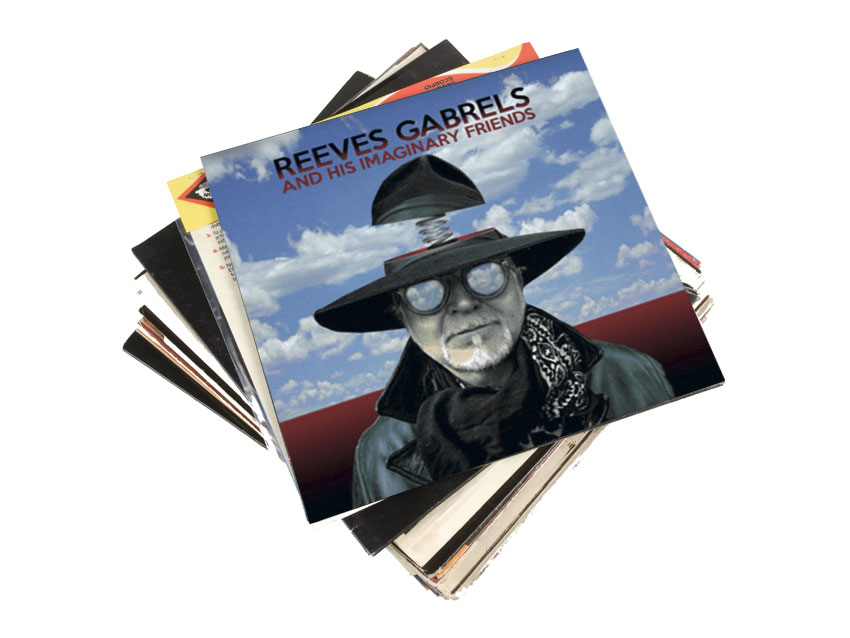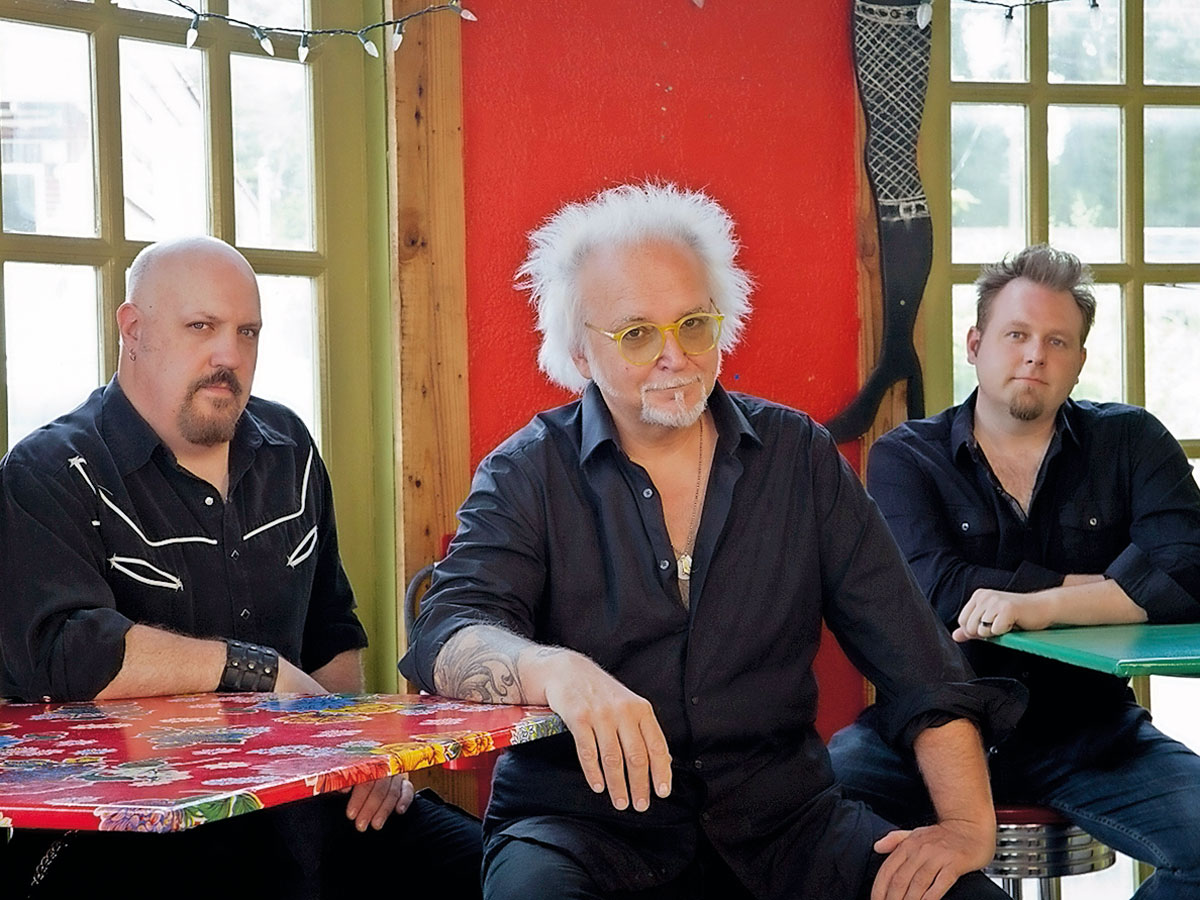On the record: Reeves Gabrels & His Imaginary Fr13nds
Former David Bowie and current Cure guitarist discusses fifth album

Introduction
Reeves Gabrels is probably best known for his role as David Bowie's guitarist during the 90s, or as the current axe-slinger for The Cure. Now he unveils his fifth solo offering, Reeves Gabrels & His Imaginary Fr13nds, an album that proves patience is a virtue...
The Essentials
ALBUM: Reeves Gabrels & His Imaginary Fr13nds
STUDIO: Subterranea, Nashville; Bell Tone Recording, Nashville
PRODUCERS: Reeves Gabrels and Rob Stennett
The Sessions
“I thought I had the record finished in 2012, but then I joined The Cure and that kind of closed the window for releasing the album until now. Over the last two years, I’ve recorded a couple more pieces and remixed a couple of things. When I went back, I was able to hear it with fresher ears, and I found myself being able to listen to the mixes more objectively.
"Most of the recordings were done at Subterranea with Rob Stennett, but we also worked on a couple of little instrumental pieces with Roger Nichols at Bell Tone. I would say about three quarters of the songs were cut live, including the solos.
"We worked them up and I would sing and play guitar like I was playing them live, but the amps were isolated so that if we didn’t want to use the tracks there was no bleed. I was always standing in the room with the drummer and the bass player.”

The Guitars
“My new Reverend Spacehawk came along after the album was recorded, so it isn’t on the record, but I did use my first signature model with Reverend, the RG. It has a Railhammer Chisel pickup in the neck and a Chisel in the bridge.
"One of the cool things about Reverend is the guitars have got a bass contour, which lets you take the bass out of the pickup so you can get a single-coil sound with humbuckers.
"I played a guitar that became the prototype for the RG. That has a Fernandes body and a Sustainiac sustainer. I also have a guitar that looks like a Jazzmaster, but it’s got a ’67 Telecaster neck on it, a sustainer sytem and a Strat-style tremolo; and I have a guitar built by Pete Skermetta. That’s like an all-mahogany Les Paul, but it has a very distinctive voice and I used it on quite a few solos.
"I played a couple of other Reverends, a Sensei, an ’87 black Les Paul Custom, a Jerry Jones electric sitar, a 1930s-style Martin archtop and an all-Korina Telecaster-style guitar with two P-90s.”
The Tones
“I had a Bogner Uberschall that was modified for me so it had two identical overdrive channels, one for rhythm crunch and one for lead. Then I used a late-80s Marshall Mark II combo, a Bolt amp and an Audio Kitchen Little Chopper.
"I’ve been using the Kaoss Pads since they first came out in the late-90s, and with that and a volume pedal I can make some nice textural pads. I then used a Line 6 Delay Modeler; a Line 6 Modulation Modeler; Ernie Ball, Vox and Dunlop wahs; a Super Fuzz; a Z.Vex Fuzz Factory; and a [Analog Man] Beano Boost treble booster.”

The Mix
“My last record sounds very live and, for this one, I wanted to record everything in mono and then place it in the stereo field - other than the drums, which were a different story. I didn’t want to have a big stereo spread of effects. If you listen to the Jeff Beck album with the orange on it, even Max Middleton’s piano is mono!
"I was thinking of that record and also Hendrix’s The Cry Of Love, where the sounds are super-real and don’t sound like they were recorded in any place, but magically appeared fully formed on the tape.”
The Lessons Learned
“I think the thing I learned most was that letting it rest for a year was very instructional. When I went back and listened, I could see where I was full of s**t on certain points, like my attitude at the time didn’t hold together, or my playing, or my lyrics.
"I could go about and change things and remix some of the tracks and record a few more passages. I learned it’s nice to have distance from a record before you put it out.”
The Verdict
“I’m very happy with this album; it’s kind of what you’d expect me to do, but I guess that depends on expectations. When I’m left to my own devices my roots come out, and my roots are basically classic rock from the early-70s.
"I was a big fan of Humble Pie and Mountain, but a lot of people that know me from the Bowie period don’t think of me that way. They think of me as being in the Sonic Youth experimental camp, or Robert Fripp or something. If you’re fans of edgy rock guitar and less conventional, alternative songwriting, then I guess this album would appeal to you.”

